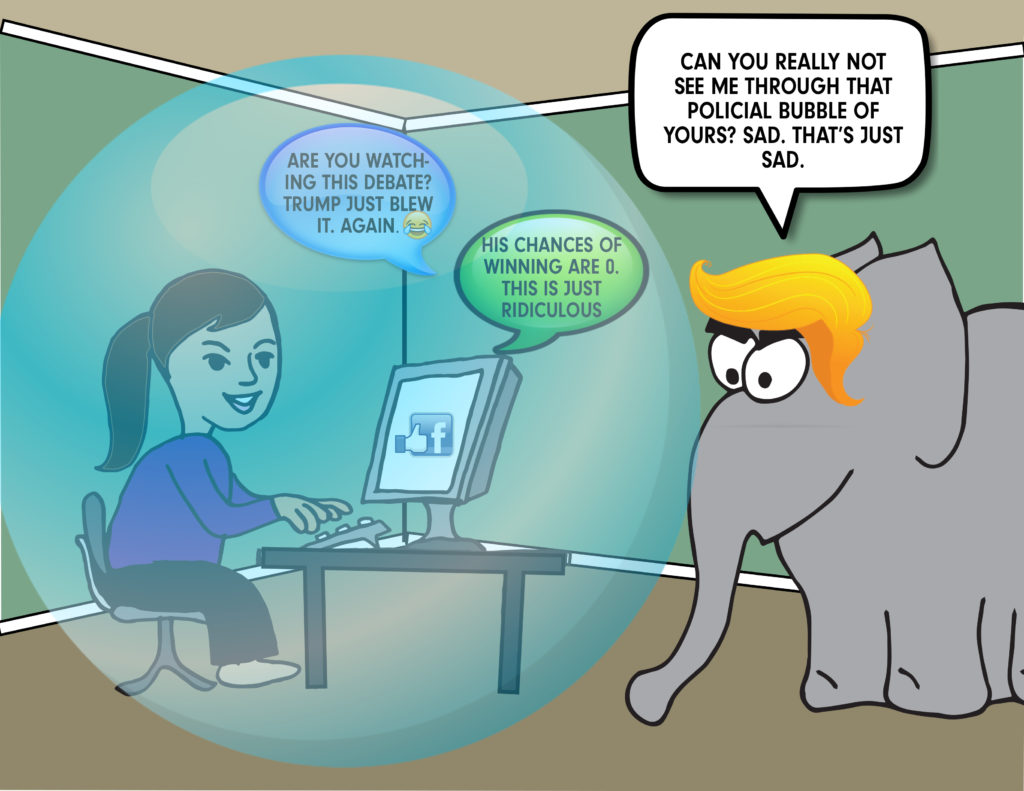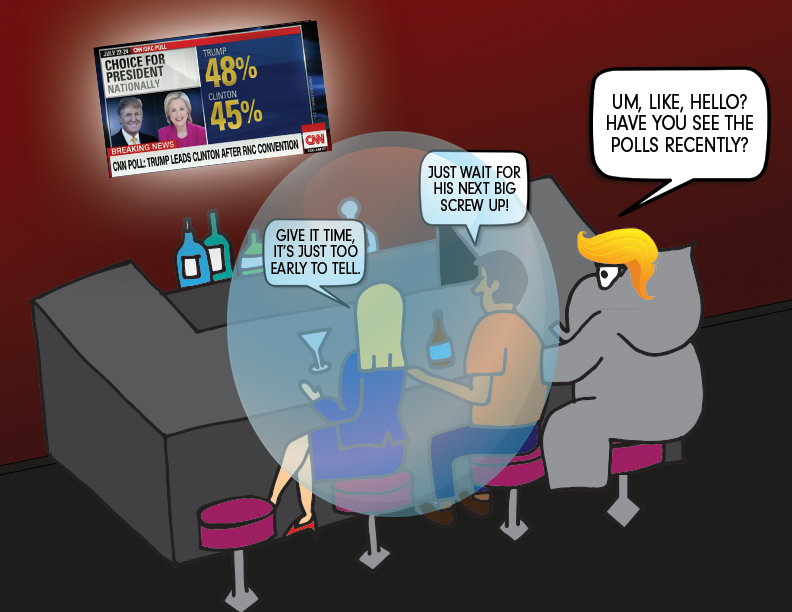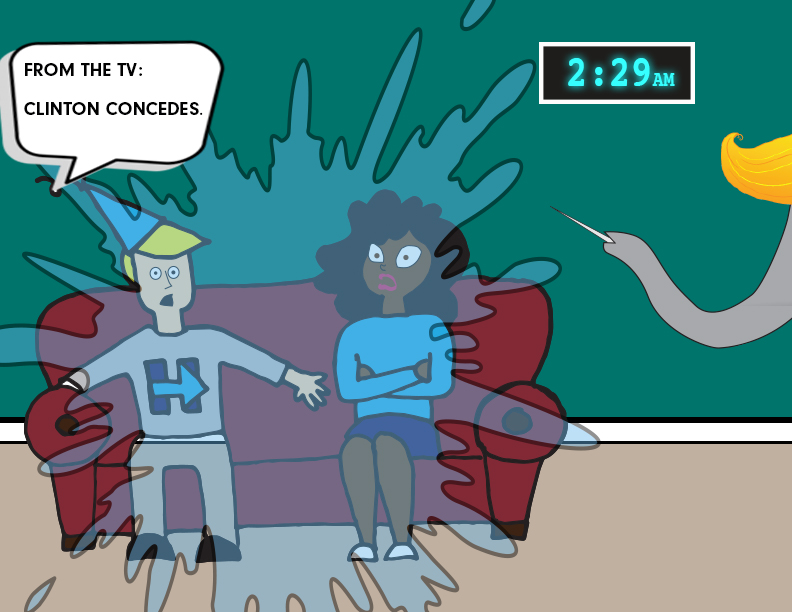By: Natalie Perez



By: Natalie Perez
Following the sheer shock I, and many with whom I identify, felt after Donald Trump was elected President this year, I decided to utilize this project as a way to explore and explain how millions could have been so blind-sighted by the results of this election.Through the past few months, it has become very clear to me that by conversing with, getting information from, and endorsing like-minded individuals, people primarily expose themselves to opinions and views that are similar to their own. Although it is not often intentional, opposing views are shut out and not often seen as reputable.
This unintentional sifting of information has been magnified through the use of social media and purposeful selection of news outlets. Facebook has recently changed their algorithm to show posts on your news feed based on topics that are trending and topics that you are most likely to comment on or “like.” On Twitter, each individual’s timeline is customized based on whom he/she chooses to follow. Furthermore, people choose to watch and read certain news outlets over others because of these news outlets’ tendency to align with certain political parties.
This massive division of information in various media outlets allows the consumer to cater their information to align to their own beliefs–it is no wonder that the election came as such a shock to many.
Through this project, I chose to create my own propaganda piece; that is, a piece created with the intention to persuade the audience to think a certain way. My target audience for this piece was the Democratic Party as a whole–really, it aims to reach anyone who was shocked by this election.
In this comic, each individual’s political one-sidedness is illustrated with a blue political bubble. Any person who is in this bubble is unable to see information supporting Donald Trump or acknowledge him as a legitimate candidate.
I chose to depict Donald Trump as the Republican party elephant with Trump’s unmistakable hair, to illustrate the common idiom, “the elephant in the room,” as a way to describe an obvious truth that went unaddressed.
In the first scene, a young woman (look familiar?) sits at her computer and reads articles she finds through Facebook supporting Hillary in the election. She is oblivious to the giant elephant standing in the room because she is unable to see him through her political bubble.
In the second scene, a couple sits at a bar on a date watching a poll from CNN that puts Trump ahead after the RNC convention. The couple blows the poll off and ignores the elephant sitting right next to them at the bar.
Finally, the last scene takes place at a pro-Clinton election watch party. This panel illustrates the moment when Clinton conceded by having the elephant finally pop the duo’s political bubble.
Humor can provide great camouflage for an argument. During the semester, we learned that humor can be a powerful tool in propaganda. Charles E. Schutz, an author and expert on political humor explains, “the concealed meanings in humor permit it to express criticism and hostility socially” (51).[1] I wanted to provoke people to think about how they might have unintentionally narrowed their knowledge of the election by interacting with only like-minded individuals. Many are still in mourning about the results of the election, so I did not want the message to be harsh and accusatory. In my opinion, humor is the best vessel for this message so that the message can be delivered implicitly and non-offensively.
In order to create this comic, I first sketched each character and scene by hand. I scanned these sketches and converted them into vector graphics using Illustrator. Within Illustrator and Photoshop, I was able to further animate the images.
The comic strip is meant to be shared on the internet, and specifically, on social media. Embedding the propaganda into the outlet which the propaganda challenges makes the message even more powerful and ironic.
This comic strip serves as propaganda as it aims to make its audience think a certain way, and thus challenge their own actions and thoughts. Through delivering the message in the form of satire and comedy, the comic’s intention and message is concealed. The hidden message in the comic serves as the vessel that frames the audience’s train of thought, which allows the message to be disseminated in a non-offensive and non-obtrusive way.
[1] Schutz, Charles E. “Cryptic Humor: The Subversive Message of Political Jokes.” Humor – International Journal of Humor Research 8.1 (1995): n. pag. Web.